

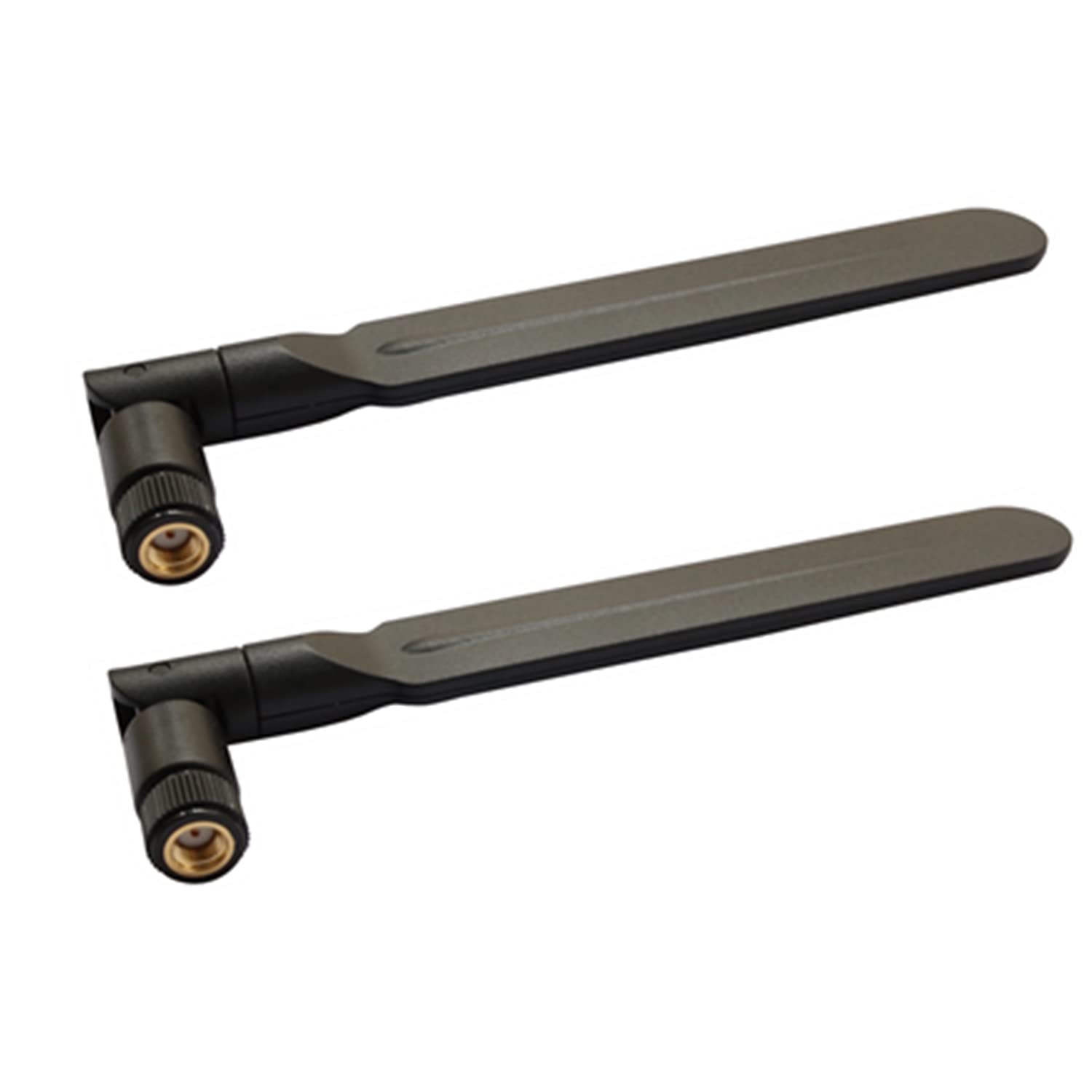
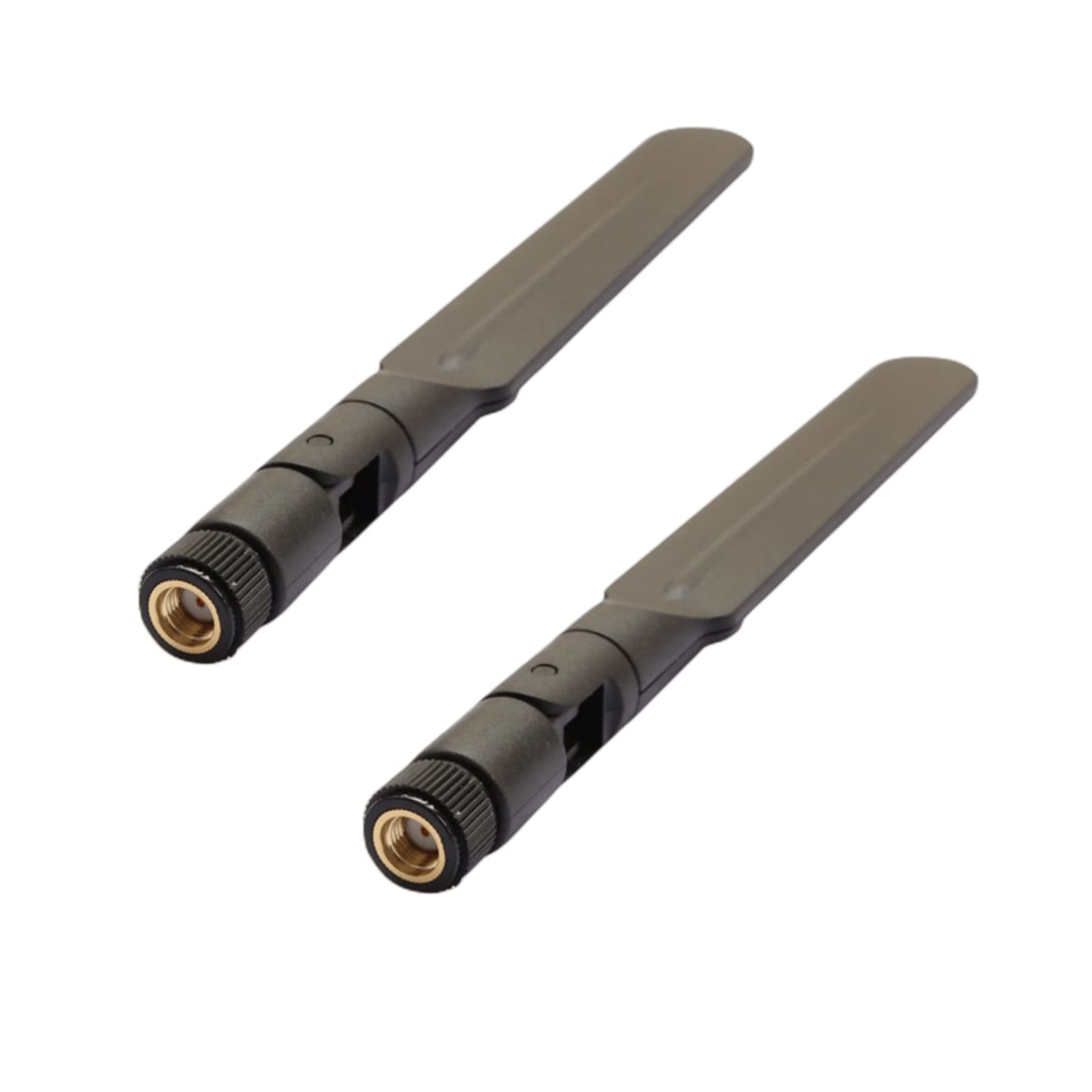
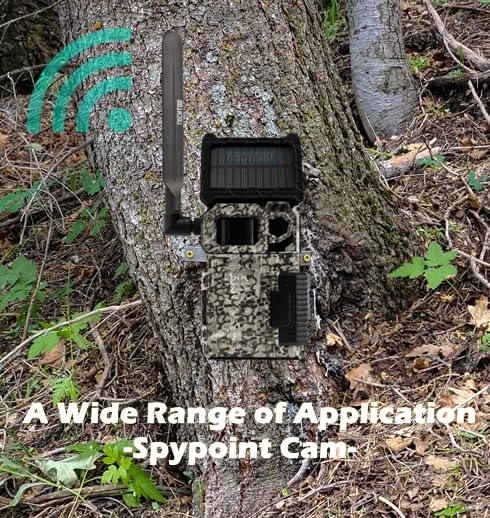
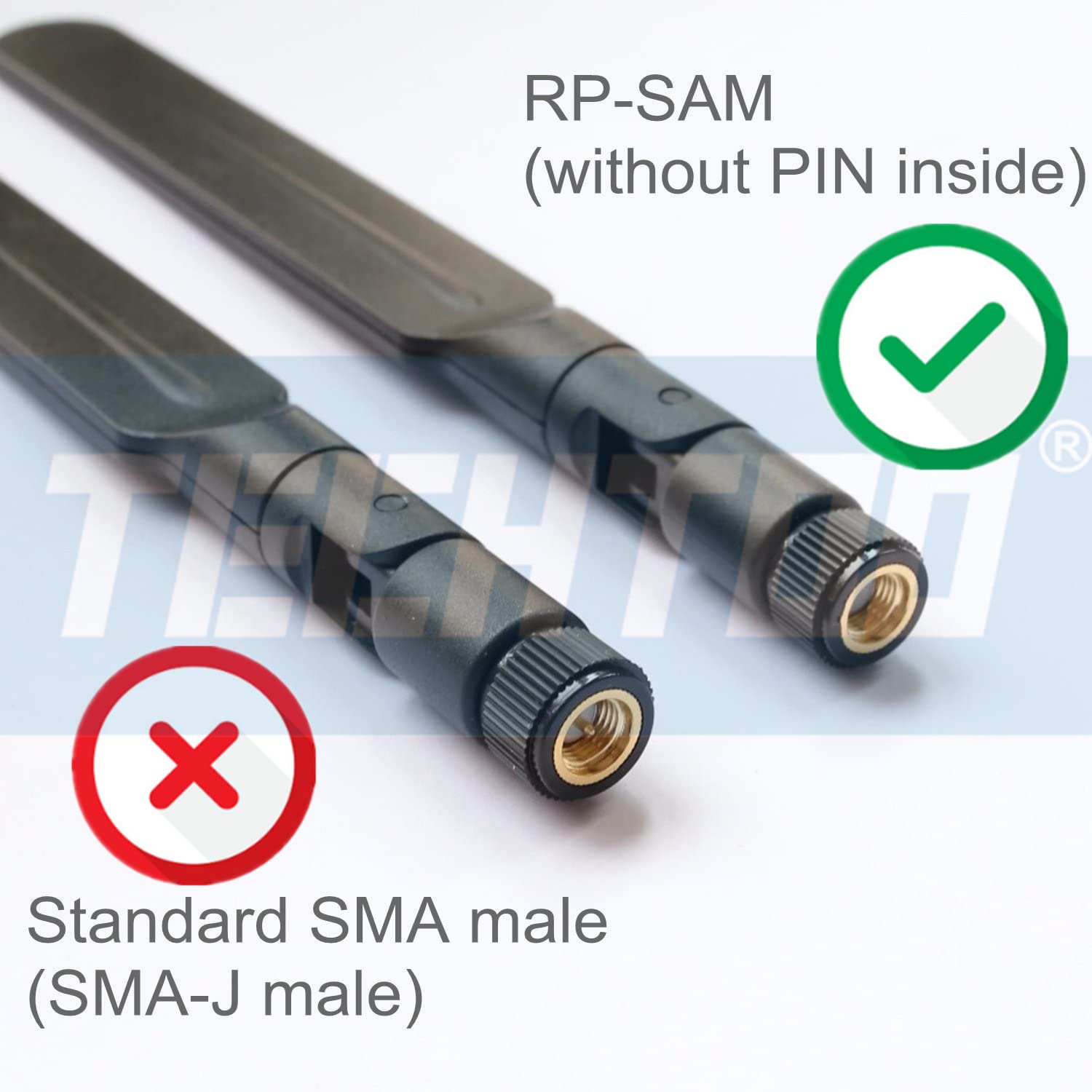
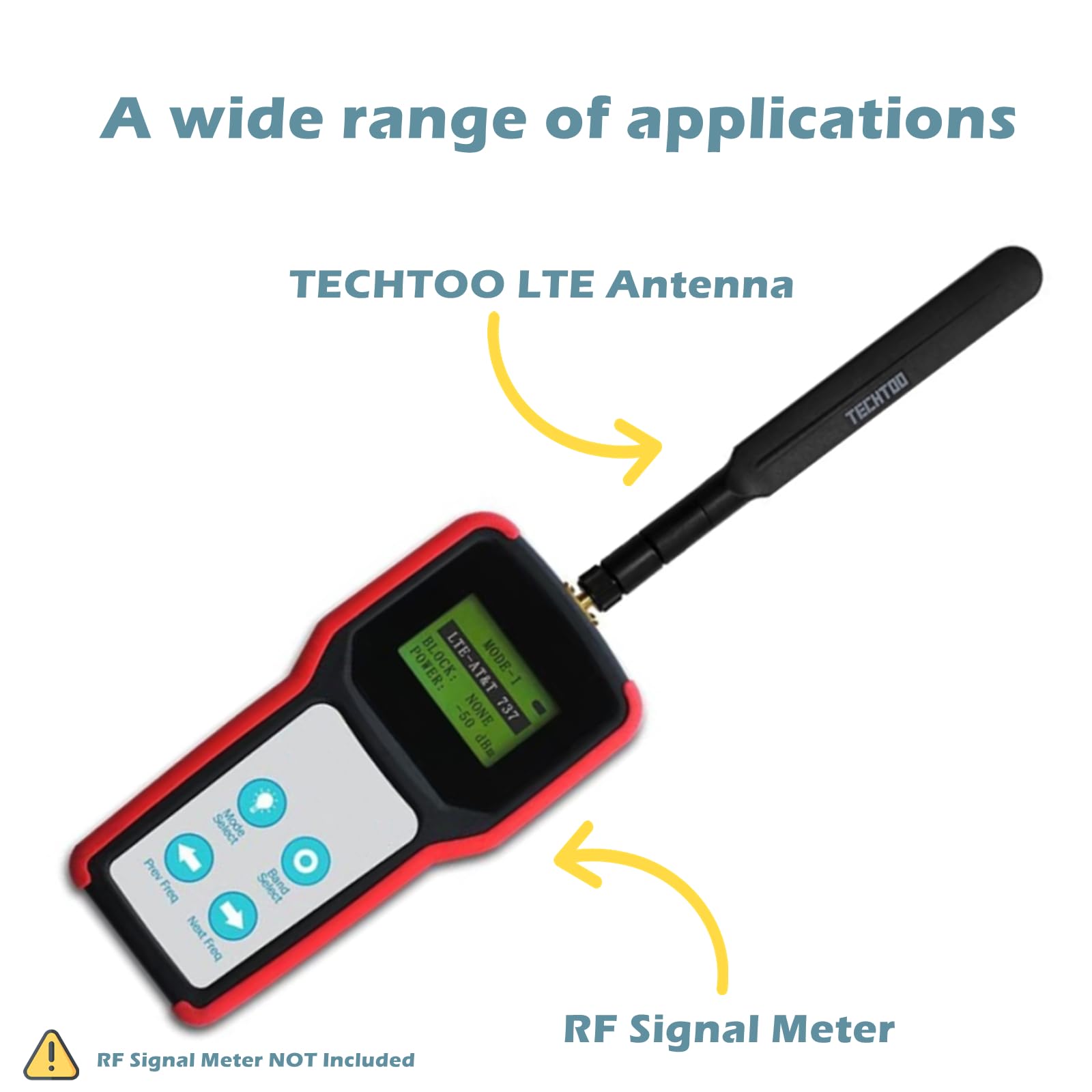

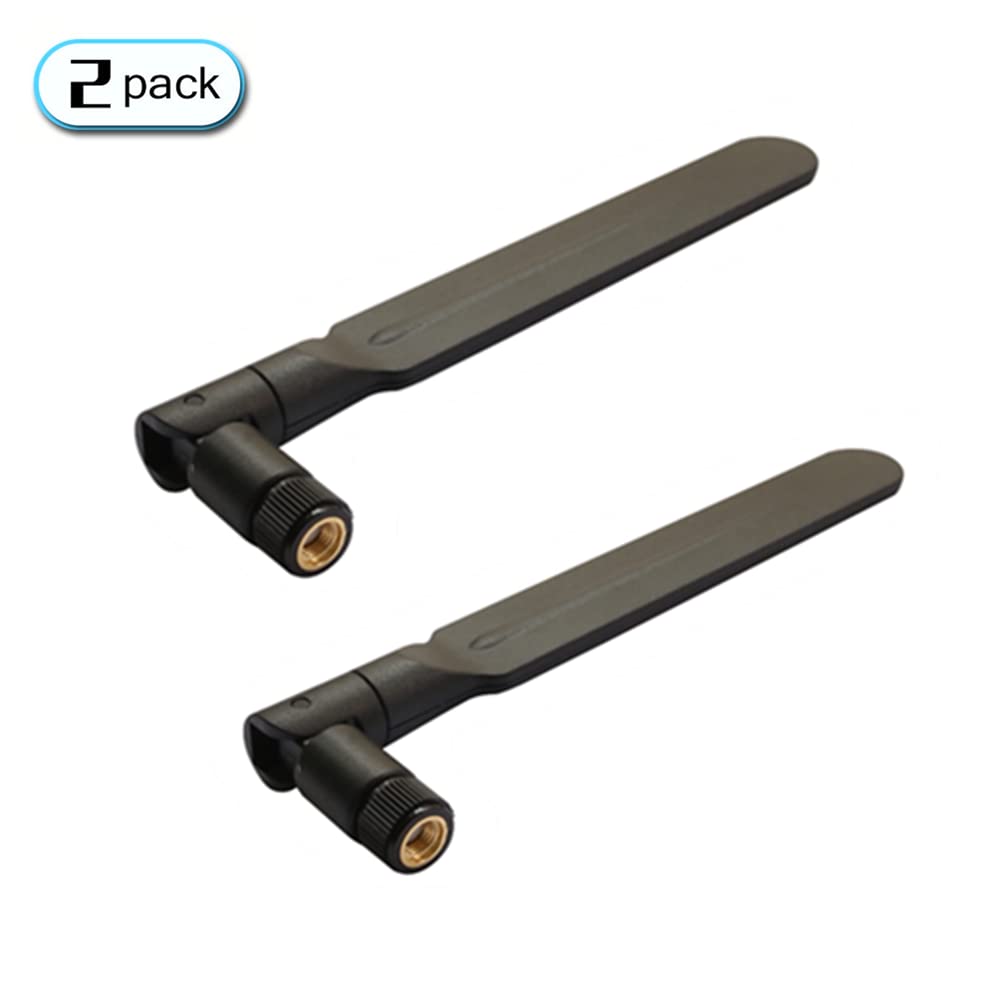
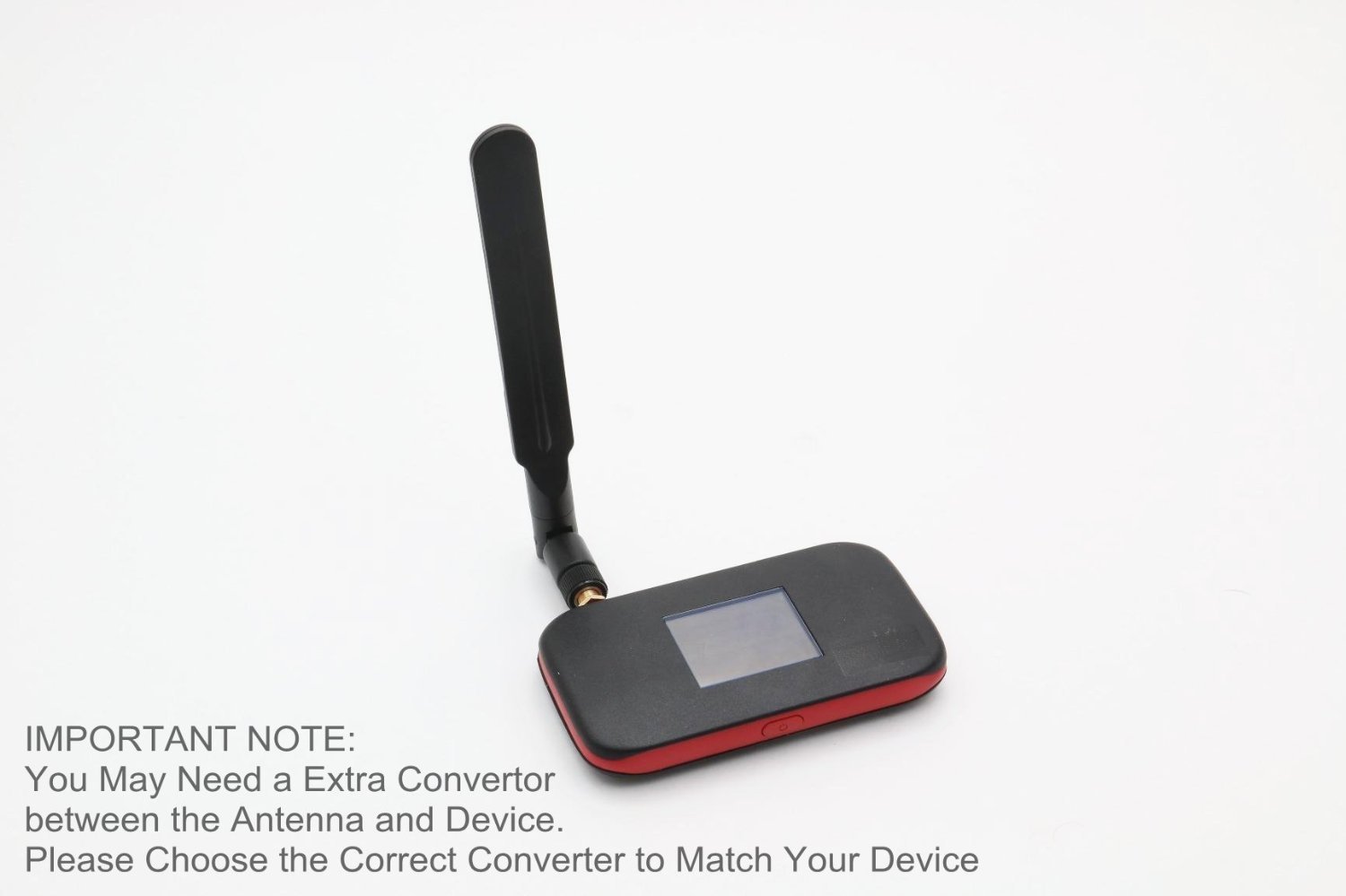
📡 Stay Connected, Stay Ahead — Never Miss a Beat!
This LTE antenna delivers a powerful 5dBi gain across a wide 700-2600 MHz frequency range, supporting all major cellular bands worldwide. Designed for easy plug-and-play use with RP-SMA connectors, it boosts signal strength for 4G routers, hotspots, and security cameras, ensuring reliable connectivity even in challenging environments.
K**R
Wish I knew about these before!
These are really well made. What's great is that they swivel up or down, so no matter which way you need them to go-they work! Depending on the amount of available space you have to work with, it's not enough to just rely on a straight connection or even a right angle connection. Sometimes, depending on the HDMI outlet location, you have to use a flexible input like these to hook up your system. If you are even considering a flush mount wall TV setup or a close wall setup, get a pair of these, especially for the price, which is a fraction of what you will pay at Radio Shack or elsewhere-if you can even find them when you need them!. Good stuff and highly recommended!
R**F
A good product at a good price
A good product at a good price, fast shipping. Unfortunately, my area reception is poor, and it didn't help much, had to go with cable internet.
N**0
Perfect for 700MHz to 2700Mhz!
Works great on my RF Explorer spectrum analyzer! I purchased this to get better Rx strength on my RF explorer for looking at 3G and LTE frequency bands between 700MHz and 2700MHz and it does the job great. Really it beats many other antennas that I have tried. Though not rated below 700MHz I should note that for detecting 70cm and 2 meter and RF signals this antenna is not the best choice but at close range it will do the trick. I plan to use this on my 3G MiFi modem.
A**I
works as expected
I was concerned based on previous reviews regarding use with Cradlepoint devices, but I purchased 4 to use with both an AER2100 and an IBR600LE, both with Verizon modems and I have a full signal on each. I'd imagine you should have the same results with any other device with SMA connectors.
J**E
Actually REDUCED the signal
Installed on my new ATT “wireless internet” which the ZTE MF279 combination LTE router with phone, Ethernet, and wifi. Prior to install in the sweet spot position in the home I had 4 bars (100db). After adding these antennas signal went down to 1 bar (120db). Spent two hours trying alternative positions of device and antennas without improvement. I removed the antennas and the signal went immediately back to 4 bars. Note the antennas seem well made, were well packed, and even came with extra adapter. Perhaps on other devices they would work.
T**H
Attaches straight to the port and picks up the Cellular signals quite nicely. I also found it does a better job ...
I purchased this as an additional antenna for my RF Explorer 6G Combo unit. Attaches straight to the port and picks up the Cellular signals quite nicely. I also found it does a better job of picking up WiFi signals than the 2.4GHz antenna supplied with my unit, though there are antennas specifically made for 2.4GHz if that is what you need.
B**S
No signal improvement
These did nothing over stock ones that came with my LTE router so I sent them back.
S**N
Does not meet claimed spec on 698-960 MHz band!
I am disappointed that this product does not meet its claimed specifications for the 700-900 MHz band. The attached plot shows return loss from DC to 3 GHz (actually, it confusingly plots return gain but calls it return loss; see [1] for a discussion about the "pesky minus sign"). Return loss is about 4 dB across that band. It should be better than 10 dB given the claimed VSWR of < 2.0! (See here for a description of VSWR, or voltage standing wave ratio [2]).For those not familiar with return loss, think of it this way. When energy is transmitted into the antenna, you ideally want all of it converted into an electromagnetic (EM) wave that travels from the antenna to your receiver, whether that's a WiFi router or a cell tower, etc. However, real-world antennas don't convert 100% of the energy at the input port into an EM wave. Also, antennas are better at converting energy at some frequencies than at others based on their length, among many other physical features. Most of the energy not converted to EM radiation is reflected back toward the transmitter that is coupled to the antenna. For example, if an impedance matched antenna has a return loss of 10 dB then about 90% of its energy is converted to EM radiation and about 10% of the energy is reflected back toward the transmitter (note that I'm not accounting for insertion loss, which for the sake of argument is small).This antenna advertises three bands: 698-960 MHz, 1710-2170 MHz, and 2500-2700 MHz. In order to meet their claim of < 2.0 VSWR across these bands, at least 90% of the energy incident on the input port should be converted to EM radiation. Most of the other 10% of the energy gets reflected back toward the transmitter. This implies that return loss should be less than 10% (10 dB) in those bands (i.e., lower than -10 dB in the plot due to the interpretation of loss as negative gain). As you can see in the plot, the antenna meets this spec at ~1700-2600 MHz, which covers a few cell phone bands and WiFi. However, performance is poor at 700-960 Mhz, which covers some important LTE bands from major U.S. carriers like Verizon and AT&T (in the plot, greater than -10 dB, and specifically around -4 dB). Note that the return loss measurements were made at 50 Ohm impedance, which is matched to the antenna's claimed load.[1,2] See comment below for links to references.
Trustpilot
1 month ago
2 weeks ago